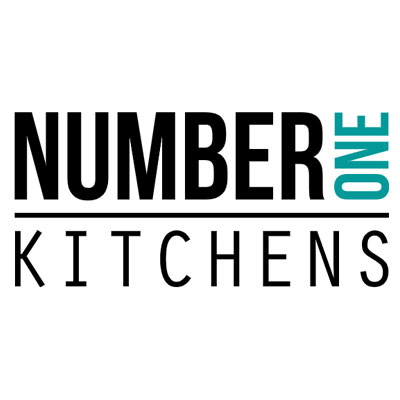The phrase content is king has been thrown about quite a bit in the digital marketing world over the last few years. It’s an adage that has caused many debates on its validity. Having quality content on your site is a must, that much is a given. It also helps to have the same standard of content, if not better, dotted around other parts of the web too. It’s all about building your digital footprint and ensuring you don’t leave any nasty trails in the sand.

So how important is the production of good content in relation to the performance of your website and your business as a whole? Many would argue that it plays a considerable part in the overall success of your digital marketing efforts, but it’s not the be all and end all. Lots of marketers across the globe argue against the phrase content is king. Do we agree? No. Content is not king; it’s much more than that.
SEO is Dead?
Another example of a common idea passed around marketing gurus throughout the world is the notion that SEO is dead. This ludicrous suggestion is way off the mark of course, but it’s shooting in the right direction at least. See SEO is far from dead, it’s just not the same entity anymore. This practice has been evolving since its conception, but the last 3-5 years have really seen a significant shift in the way we approach optimising our search engine results. So it’s not dead, we’d even say it’s still walking quite spritely; but it is losing some of its colourful power.
Black Hat, White Hat or Any Other Hat for That Matter
By colours we mean black, white, grey and sometimes a mixture of them all! Ah yes, remember those days? When we were arguing over what colour hat was the right one to wear and which elements of SEO were appropriate for each hat. We had your goody two shoes with their white hats and their clean and proper practices; matched with the evil crooked black hat wearers and their shrewd tactics.
Of course there are still some members of the dark side still roaming amongst us, practicing their aggressive optimisation tactics. But generally, one way in which SEO is changing is that it is becoming increasingly more honest. Algorithm updates from Google have mainly seen to that, making it harder for tricksters to manipulate search engine results. The panda and penguin update did away with poor, copied content and illegitimate backlinks. Then of course the sweet hummingbird brought more meaning behind the words and allows Google to better refine their rankings.
Nowadays, sloppy link building and terrible content just doesn’t cut the mustard or put food on the table. That’s just a standard in today’s digital era. We are less able to manipulate SEO practices in a less-than moral fashion, not that all digital agencies were doing so years ago. Plenty of good SEO companies were around applying ethical techniques and appropriate strategies. Unfortunately though, many were also being drowned out at by the less honourable side of the SEO world.
You Can’t Con Google Anymore
Because of the honest nature of SEO at the present time, there are very little ways of conning Google anymore. You can’t bark without bite these days and bite mainly derives from sharing valuable content. It’s not good enough trying to convince Google, or any other search engine, that you are magnificent if you’re not trying to tell your customers the same thing. Search engines won’t recognise your site as a popular authority in your industry unless you have popular content and followers to back it up. It’s as simple as that.
Old School Marketing
It’s clear then, honesty is the best policy and good old fashioned content is the key to success online. So if you think about it, digital marketing has perhaps gone back a step and back in time to a much simpler era. Old school marketing techniques, before the days of the internet and social networking, were all about putting eye-catching content in the right places.
The right places consisted of billboards, fliers, magazine articles and the sides of buses. Posters, television advertisements, cigarette packets and newspapers; the list goes on. The point is, back then the aim of the game was to put as many images of your product in as many popular places as possible.
Say we were in the 60s now; could you imagine us trying to promote our company by always referring to a guy called Google? This guy apparently has a memory bank of companies that he lists in order of his own personal preference; with some added influence from organisations who attempt to optimise him. Not to mention the fact that he has a few doppelgangers who claim to have the same power; one called Yahoo and some East-Asian lad called Bing. Sounds ridiculous doesn’t it?
Can We Trust This Google Guy?
I guess one answer to the above question could be, “well how smart is this Google guy?” Well, he’s possibly one of the most intelligent beings on the planet today with an unfathomable wealth of knowledge and mind boggling algorithms that allow him to order his list appropriately. But the eminence and grandeur of this slowly fades once you learn about the organisations trying to optimise his mind and alter his thoughts on the list.
This is the 60s we’re talking about; we won’t believe some crazy Google guy with his mind controlling optimisers! We’re going to stick with the products we already know and trust, because their advertising slogans and marketing campaigns are constantly being displayed in all of the right places! On billboards, fliers, magazine articles…you get the idea!
Content in the Right Places
Digital marketing in 2015 now has to adopt a very similar approach. Stop thinking so much about the judge and concentrate on your game. Yes, of course, standard SEO practices are extremely beneficial and are a necessity for ranking purposes. Analytics, keyword research, on-page, off-page, Meta tags, navigation, site maps…these are all massively important to the performance of your website and will always be an integral part of your digital marketing strategy.
But when it comes to gaining attention, attracting custom and achieving sales; content takes centre stage. Portraying yourself as industry thought leaders, describing your product in full detail, engaging with your customers – this is how you turn interested parties into spending customers. It’s all about creating magnificent, thought-provoking content and placing it in the right areas. It’s no good just dressing up your shop window and not placing a few pointers in and around town.
The Royal Treatment
With all this in mind, we refer back to our earlier comment. Content is no longer king. Content is country; content is freedom; content is gospel and therefore should be given the royal treatment when planning your digital marketing strategies.
Take care of your content, engage with your customers, be honest in your SEO approach and your search engine rankings will take care of themselves. You don’t need to wave and shout at Google anymore, they’re always watching you and they will recognise success












